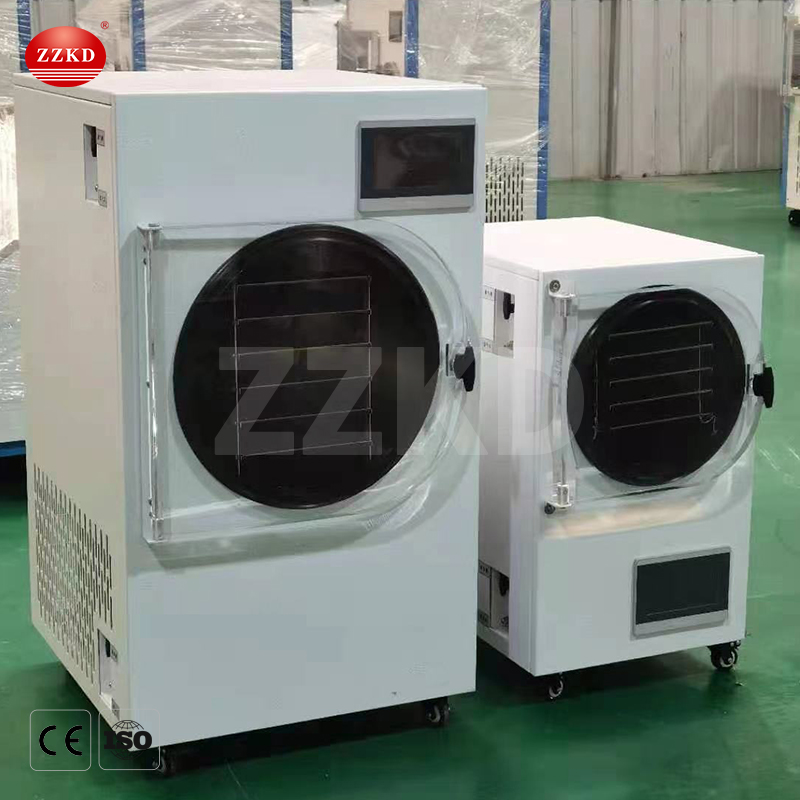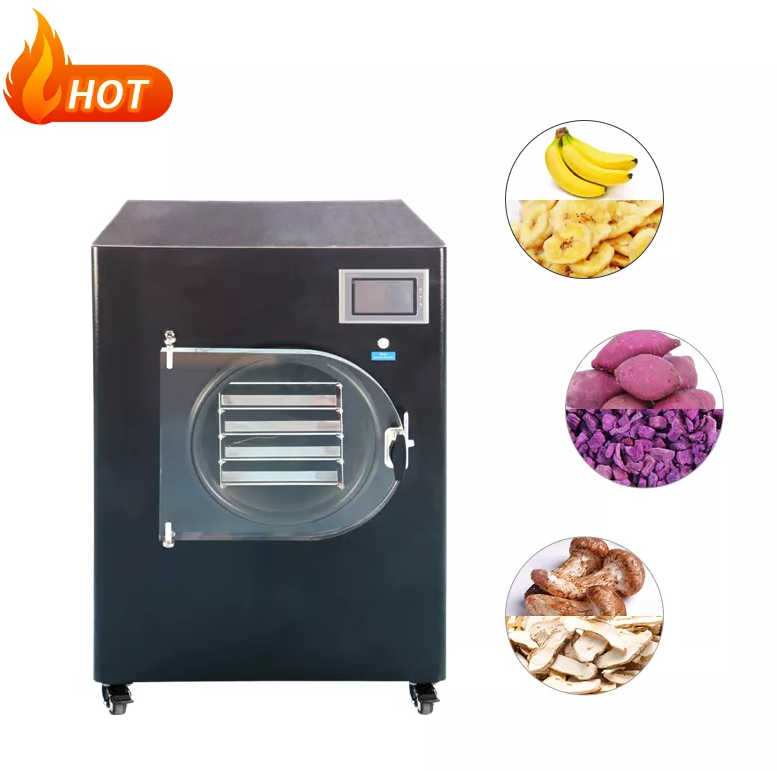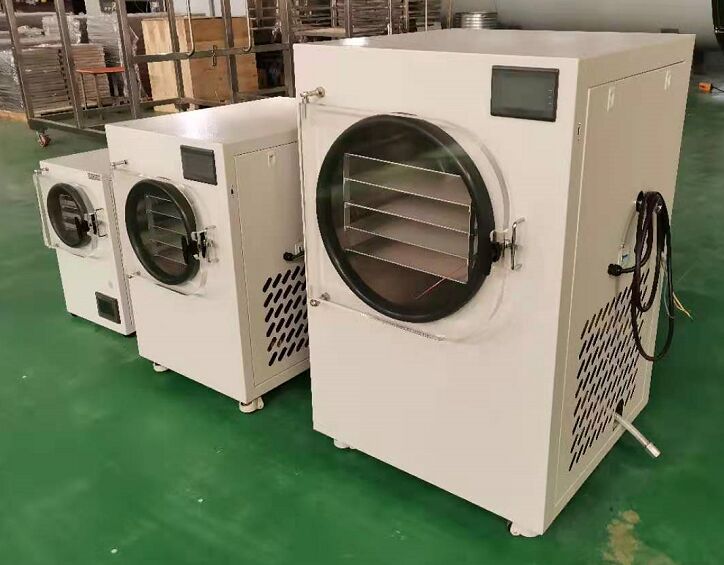How To Choose A Home Use Freeze Dryer?
Freeze dryer technology originated in the 1820s and is now widely used in the fields of food, blood products, biological products, medicine and active substances. Today we will introduce how to choose a house use food freeze dryer supplier.
1.Selection and price analysis of house use freeze dryers.
At present, the price of freeze dryers on the market is between 2000-5000 US dollars. In addition to the price, how to choose the freeze dryer before purchasing? Nowadays, freeze dryers are widely used, but users should pay attention to the following points when purchasing freeze dryers.
Manufacturer's choice. Selecting a powerful freeze dryer manufacturer, Zhengzhou Keda has many years of experience in the production of freeze dryers and technical advantages, and supports non-standard customization and solutions.

Cold trap temperature. The cold trap is a device placed between the freeze-drying chamber and the vacuum pump to trap vapor. The lower the temperature of the cold trap, the stronger the capture capacity of the cold trap, but the lower the temperature of the cold trap, the higher the refrigeration requirements, and the relatively high machine cost and operating cost.
Ice volume. The amount of vapor that a cold trap can capture is related to the total amount of water or other solvent sublimed in the manipulated sample. There are various specifications and various experimental requirements for the amount of ice condensation in the freeze dryer.
Ultimate vacuum degree: The vacuum degree reflects the leakage of the freeze dryer and the pumping efficiency of the vacuum pump. The vacuum degree should be within a reasonable range. If the vacuum degree is too high, it is not conducive to heat transfer, and the drying speed will decrease instead.
Control and display system: The control system must have real-time display of freeze-drying process parameters, such as cold trap temperature, vacuum degree, stage time and total process time, etc.; set, modify and effectively execute the freeze-drying process program with a communication interface to facilitate data collection ,save.
2.Application of freeze dryer.
Food freeze-drying equipment is widely used in: freeze-dried fruits and vegetables, freeze-dried meat, freeze-dried seafood, freeze-dried rice, freeze-dried rice noodles, freeze-dried flowers, freeze-dried tea, freeze-dried coffee, freeze-dried dairy products, freeze-dried probiotics Dry, freeze-dried Chinese herbal medicine, freeze-dried extract, freeze-dried fruit juice, freeze-dried health food and other food processing. Any food can be freeze-dried. Now the freeze-dried food processed by the food-type vacuum freeze dryer can be roughly divided into the following categories: cooking raw materials, raw materials for food industry, beverages, supplements, and advanced nutritional products and Chinese herbal medicine.

1. Foods in daily life: such as coffee, tea, meat, fish, eggs, seaweed, fruits, vegetables, seasonings, tofu, etc.
2. Processing in special food applications: This technology has been widely used in food used in field operations such as sailing, mountaineering, and exploration.
3. Application in nutritious food and instant food: vacuum freeze-dried products can well preserve the nutritional and health care components of the processed raw materials, as well as the color, aroma, taste and shape. The excellent performance of food-type vacuum freeze dryer is particularly outstanding in instant fast food, showing a strong development momentum. For example, about 50% of instant food is freeze-dried food.
3.Problems and solutions encountered by the freeze dryer:
As we all know, in the process of freeze dryer work, if there is a fault, it is easy to affect the work process. However, it is inevitable that users will inevitably encounter some minor faults in the process of using the equipment. They need to understand the causes of the faults and the corresponding solutions, so as to make timely judgments and eliminate the faults. In this regard, we have listed several common faults, and analyzed the causes and solutions.

Common fault 1: unstable power supply voltage
It is understood that the normal working power supply voltage of the freeze dryer is 215-225 volts. After deviating from the allowable voltage range, the compressor cannot work effectively or even run at all. In view of the unstable power supply voltage, the solution is to replace the qualified power supply when the power supply voltage is unqualified; when the power supply voltage is unstable, 220V can be used or a voltage stabilizer can be added to the original working power supply.
Common fault 2: Indoor temperature is higher than 30°C
The freeze dryer needs to operate in a suitable environment. When the indoor temperature is higher than 30°C, the condenser may not be able to condense, thus causing the system to malfunction. The repair method at this time is that if the indoor temperature is around 28°C, the user can open the condenser rear door or open the room door to optimize ventilation and cooling conditions.
Common fault 3: Indoor temperature is lower than 0°C
The indoor temperature is too high, not too low. If the indoor temperature is lower than 0°C, the compressor oil will become viscous and easily affect the normal operation of the compressor. In addition, when the temperature is too low, all electronic components may be affected and malfunction may occur. In response to this situation, the maintenance method suggested by the technicians is that when the ambient temperature is lower than 0°C, other heating equipment can be used to raise the ambient temperature and keep the temperature above 5°C and below 30°C.
Common fault 4: too much dust on the freeze dryer or in the environment
If there is too much dust covering the condenser and the compressor, it is easy to make the condenser unable to achieve the condensation effect, which directly affects the use effect of the compressor. Therefore, regular dust removal is essential. Zhengzhou Keda advises customers that if there is too much dust in the environment, users can regularly remove the dust covering the compressor every month.


